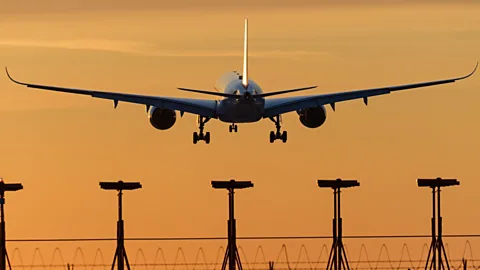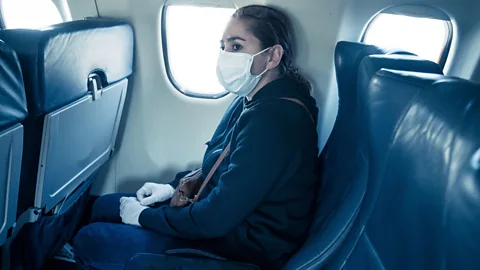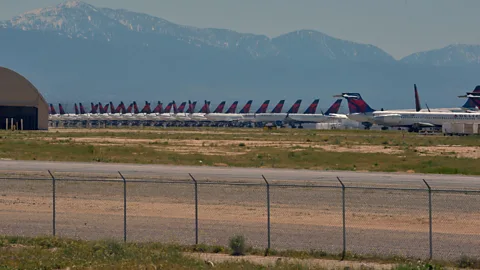Will coronavirus make flying more expensive?

Covid-19 has caused unprecedented turmoil in the aviation industry. What does that mean for pricing when planes take to the skies again?
As more countries start to ease their Covid-19 lockdowns, attention is returning to the global aviation industry, almost entirely grounded for months. Some passenger airlines have kept skeleton fleets flying for repatriation missions, some have converted passenger jets to use as cargo planes, but all of them would much rather return to their primary objective: flying people safely around the world.
But when planes do take to the skies again, how much impact will the pandemic have on what they charge? “We know airlines want to get planes back in the air and bums back on seats,” says Benjamin Cany from Amadeus, a technology company that provides IT services to the travel industry, including one of its principal booking systems. In the short-term at least, that would point to lower fares aimed at incentivising consumers.
Yet look past the next few months and there are factors that could push fares up, from airline bankruptcies that could reduce both supply and competition, to reduced fleets caused by retiring aircraft early. And the great unknown is how quickly passengers will return to flying, with the general feeling in the industry that aviation won’t return to pre-pandemic numbers until 2022, 2023 or beyond.
Airlines, Cany says, usually look at past demand to forecast future trends. But there’s no precedent for the current circumstances. “What are airlines to do when the past data is radically different, or no longer relevant for future calculations?”
The pricing equation
Airline pricing, explains Cany, is normally based on a combination of scientific calculations and models. This, he says, “is about understanding the customer's motivation to travel and how much they are willing to pay for the ticket. Airlines then balance that against capacity, and a myriad other indicators. The airline wants to strike the best deal for the airline and the traveller.”
This is both a science and an art. The science, Cany says, “is in the modelling, machine learning and algorithms behind this calculation” and would usually include “the choice between the different airline products (for example, business versus premium economy) and the various airline itineraries available (departure time, arrival time, trip duration). That needs to be combined with historical data, seasonality, as well as market indicators such as upcoming local events, competition on that same route, and so forth.”
The art, meanwhile, comes from “the airline’s pricing and revenue management experts, who adjust these indicators to develop the most accurate forecast. That’s where the technology helps, providing these teams with the tools to improve the forecast accuracy to the highest degree,” Cany concludes.
But nobody knows how the models that aviation has been honing for decades will change as a result of the extraordinary Covid-19 challenges, particularly given the situation is still evolving.
When will demand return?
In the most basic of economic terms, for example, airline fares are set based on a supply curve and a demand curve. Airlines usually have the lever of supply under their control, and it’s generally understood that when they want to stimulate demand to fill capacity, they reduce fares. More people will travel if a ticket is $50 than if it is $100. The X factor right now is that many people are scared to travel because of hygiene concerns, lockdown guidance and quarantine rules.
 Alamy
Alamy“Short-term, aircraft will continue to be much less full and airlines will be motivated to price seats to get customers flying safely in a Covid-19 world,” says Joe Leader, chief executive officer of APEX, a trade association whose members include airlines and their suppliers. “Airlines have cut back their flights to absolute connectivity minimums and are losing money on the vast majority of remaining flights… Hopefully, the combination of increased Covid-19 safety measures alongside low prices will encourage a travel rebound.”
Paul Simmons, a senior airline executive with experience at numerous airlines worldwide including easyJet and Malaysia Airlines, suggests much will depend on what part low pricing can play as a tool to persuade people to travel. “It could be that airlines find their traditional lever of low pricing to drive bums on seats does not work as well as it used to. People may have higher concerns.”
The general view is that domestic travel will recover first, a view with which Peter Foster, CEO of Kazakhstan’s national carrier Air Astana, agrees. “Initial indications from our recently-restarted limited domestic flights are that there is pent-up demand for these routes. We believe that business, worker and student travel will recover well before leisure travel.”
IATA, an airline trade association, expects low demand when countries first start to travel again, despite some business travellers needing to fly and a desire for what’s known as VFR — visiting friends and relatives — traffic as people miss their families. On the plus side for airlines, IATA notes that the biggest variable cost in aviation, fuel, will be low: as drivers in many places are noticing, there’s oversupply in the petroleum industry keeping prices down.
Will supply fall?
If there are major unknowns on the demand side, there are also evolving factors influencing pricing on the supply side.
 Alamy
AlamyOne of the starkest images for the airline industry has been the sight of line after line of jets parked on runways and put into storage at aircraft recycling ‘boneyards’. While older and less efficient planes will be retired, some of them years ahead of schedule, airline executive Paul Simmons points out that most of the planes taken out of fleets have been stored, not scrapped. “This is an important distinction,” he says.
Joe Leader from airline association APEX suggests that “there will be more than enough supply even with all of the early aircraft retirements”. Certainly to start off with, demand will be low enough to be met by the aircraft that haven’t been retired. Airbus and Boeing have both announced cuts to the numbers of new aircraft they’re building every month, but as demand rises again, the aircraft manufacturers can increase production, airlines can extend the life of aircraft they’re using, or older aircraft can be brought back into use from storage.
It’s already clear that the airline landscape, and indeed the names painted on the side of the aircraft, are likely to be forever changed. Some airlines have already filed for various forms of bankruptcy protection or indeed have simply gone under. This will, in many cases, lead to less competition – and the possibility of monopoly pricing, which tends not to favour consumers. Yet it’s likely that regulators will come down hard on airlines seen to profiteer, while other carriers will seek to jump into monopoly markets where that is possible, or new entrants will arise. For passengers, that’s likely to mean a fair amount of volatility in fares.
“Although some airlines will inevitably go out of business, others will scale up to fill the void,” comments Simmons. “The ‘rightsizing’ of supply and demand may take time, however, leading to higher pricing in the medium term.”
No easy answers
The watchword for aviation, as for so many industries looking to rebound from Covid-19, is going to be uncertainty. New waves of infection, or treatment breakthroughs, would both influence the future path. So too will political and regulatory responses, as well as the wider global economic fallout that is being forecast.
Demand, crucially, is not rising evenly; different government restrictions – especially quarantine periods on arrival for travellers from some nations – will have effects that are very complex to model, and will necessarily differ between nations or even within regions of the same nation.
The US is an example of how perceptions and thus demand can vary across a nation. Scott DeAngelo, chief marketing officer of niche leisure carrier Allegiant Air, said on an earnings call that customer surveys revealed that “in the Midwest and Mid Atlantic, the Upper West, I got to tell you they don’t share the opinion that the evening news is putting out there” around travel. Pictures over the US Memorial Day holiday weekend have shown leisure destinations in some parts of the country packed with partygoers.
It seems likely that travel resumption “bubbles” between neighbouring countries and regions with acceptably low infection rates (where “acceptably” will also vary) will continue, and while these may stimulate demand travellers will also not want to be caught overseas if restrictions return swiftly. The question of whether any travel insurance would cover Covid-19-related issues is also crucial.
Airlines also need to start flying for people to start buying tickets even in a reduced demand scenario, and we are only just starting to see a very limited number of airlines resuming very limited schedules. That all makes predicting the effects of the interlocking factors upon which airline pricing is based challenging. The demand side of the curve is particularly tricky for long-haul pricing, says Air Astana CEO Peter Foster, who nevertheless expects that the stronger long-haul airlines are likely to try to kickstart demand with lower fares.
Short-haul carriers, meanwhile, may benefit from low oil prices, reduced aircraft prices that enable counter-cyclical orders and lower salaries due to surplus aviation workers. “The prognosis may well be lower airfares on short/medium haul routes for at least 18 months to two years,” Foster expects.
And while Covid-19 is unprecedented, he believes the past can offer indicators for future trends. “After every major crisis of the last 20 years – the Asian financial crisis of 1998, 9/11, the global financial crisis – low-cost airlines have emerged faster and stronger because suppressed demand combined with depressed consumer spending power has driven people to them,” he says. “I doubt 2020/21 will be any different.”
Aviation journalist John Walton writes about airlines, aircraft and everything aeronautical. He welcomes questions and discussions from readers via email to [email protected] and on Twitter (he’s @thatjohn).
